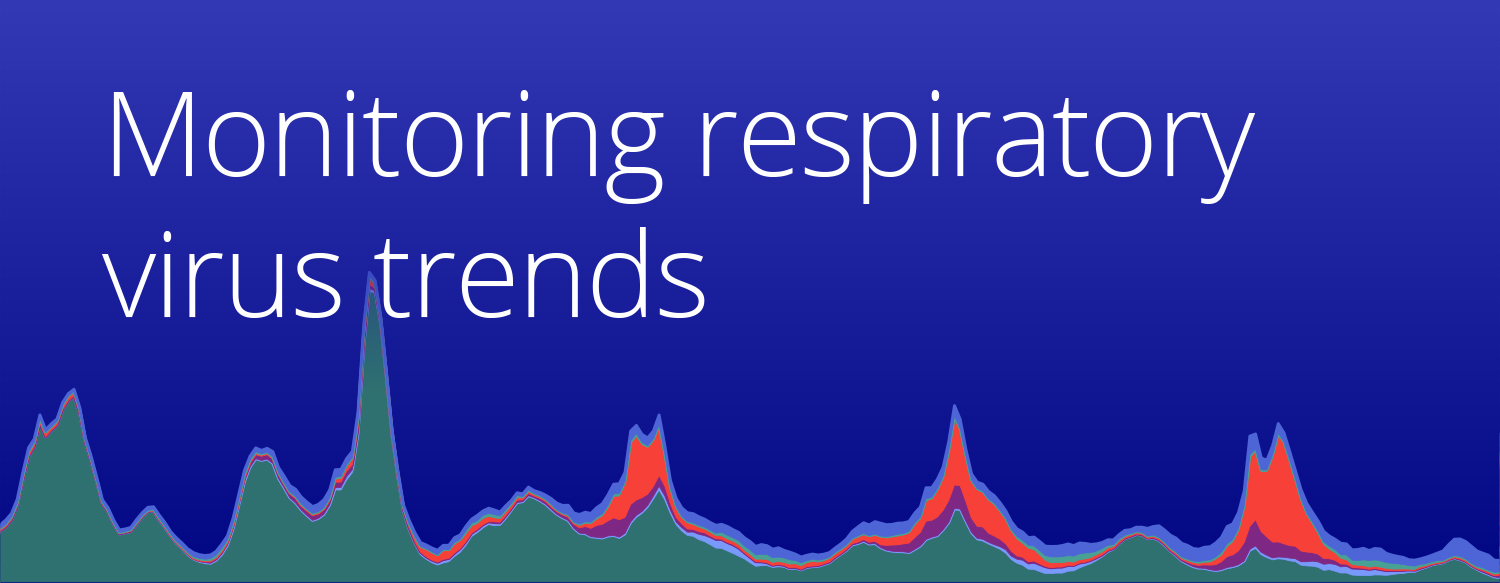- Respiratory virus–associated hospitalizations declined overall in October 2025 (–31.8%).
- The rate of RSV-associated hospitalizations in children under five more than doubled for the second consecutive month, signaling early seasonal activity.
- Rhinovirus remained the leading cause of virus-associated hospitalizations across all ages.
Respiratory viruses, including COVID-19, influenza, and respiratory syncytial virus (RSV), continue to contribute to hospitalizations across the United States. Vulnerable populations, such as infants, children, and older adults, are particularly at risk of severe outcomes. Few sources regularly monitor hospitalizations associated with respiratory viruses. Truveta Research has created a respiratory virus monitoring report to supplement the surveillance data provided by the CDC by describing weekly trends in the rate of hospitalizations overall and for each of the six most common respiratory viruses: COVID-19, influenza, human metapneumovirus (HMPV), parainfluenza virus, RSV, and rhinovirus. This information can inform decisions about public health, clinical care, and public policy.
Because Truveta Data provides the most complete, timely, and clean de-identified EHR data, including full patient medical records, notes, and images, linked with closed claims for more than 120 million patients across the US, we can show the latest trends in these respiratory virus-associated hospitalizations, including valuable insight into two at-risk populations: infants and children (age 0-4 years old) and older adults (age 65 and over).
This blog provides a snapshot of the key findings with data through November 2, 2025 in the report specific to the overall population across all respiratory viruses, as well as for two high-risk populations: infants and children (age 0-4 years old) and older adults (age 65 and older). For the full analysis—inclusive of demographics, comorbidities, and overall trends in virus-associated hospitalizations and testing across all age groups for each virus—see the complete report with data through early November 2025 on MedRxiv.
Key findings: Trends in respiratory virus-associated hospitalizations
Using a subset of Truveta Data, we identified 830,292 hospitalizations of 758,329 unique patients who tested positive for a respiratory virus between October 1, 2020 and November 2, 2025.
Overall hospitalization rates declining
The overall rate of respiratory virus-associated hospitalizations decreased in October. There was a 31.8% decrease in the rate of hospitalizations from the end of September to the end of October, with respiratory virus-associated hospitalizations accounting for 1.3% of all hospitalizations at the end of October.
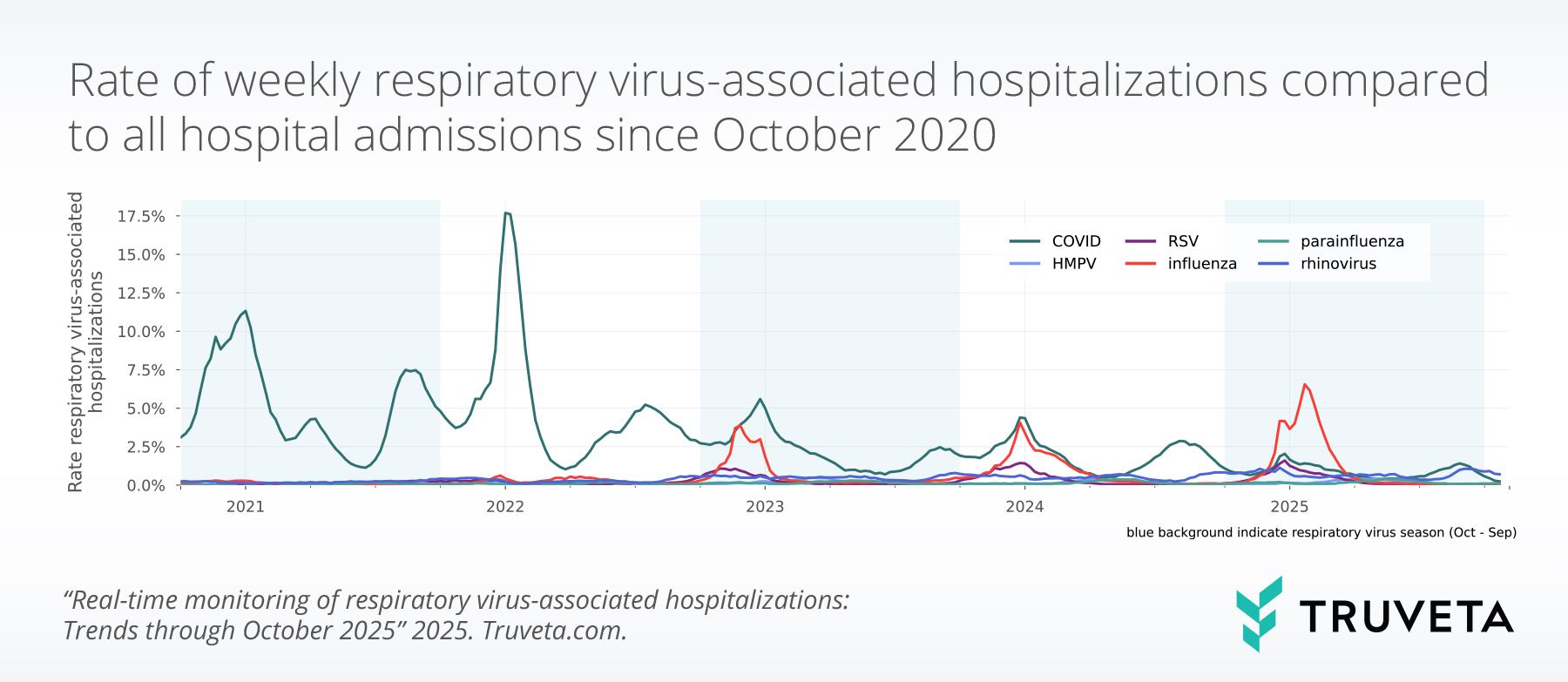
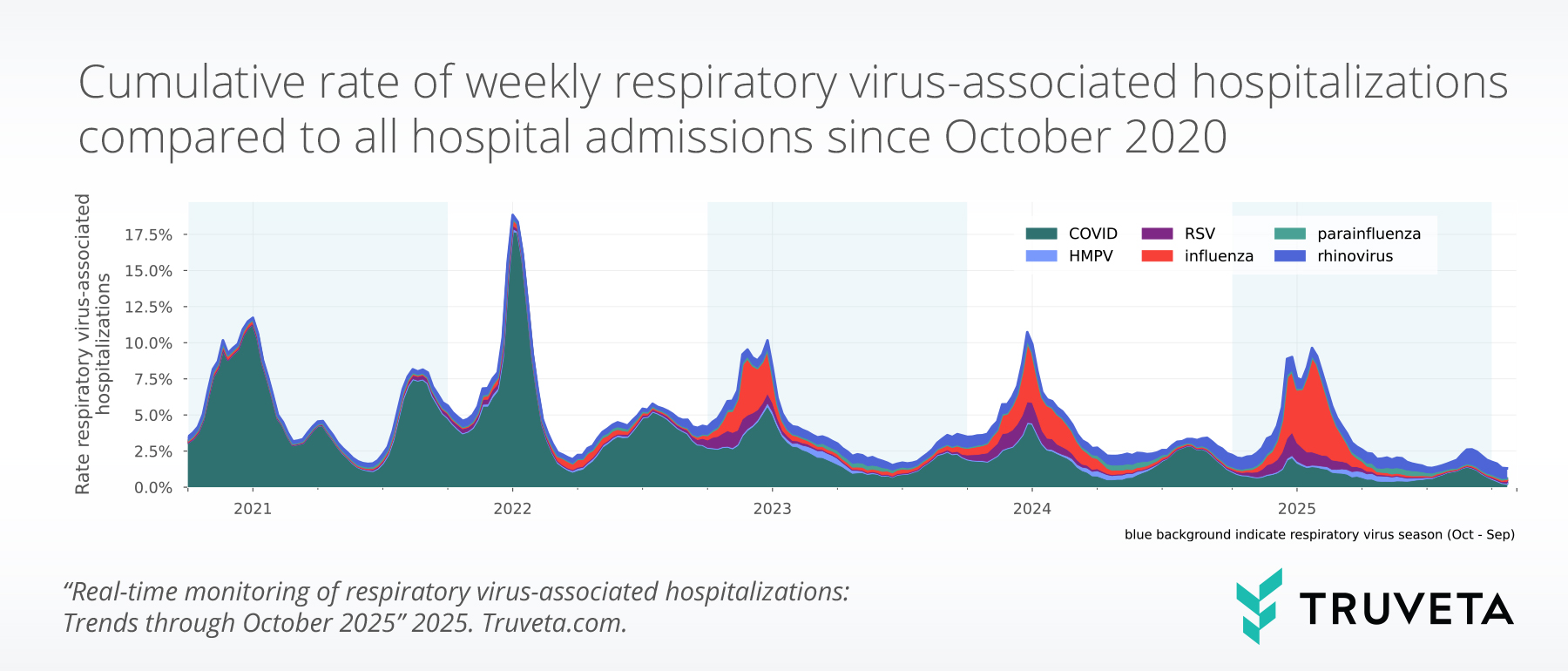
Notably, rhinovirus-related hospitalizations were the leading cause of respiratory virus-associated hospitalizations through October. Despite a small decrease in the past month, rhinovirus is associated with 0.7% of all hospitalizations.
COVID-associated hospitalizations decreased substantially across the month (-68.2%), while hospitalizations associated with influenza, HMPV, parainfluenza, and RSV remained low and relatively stable.

Pediatric respiratory virus-associated hospitalizations remain stable
Among children aged 0–4 years, respiratory virus-associated hospitalizations remained stable at 2.0% throughout October.
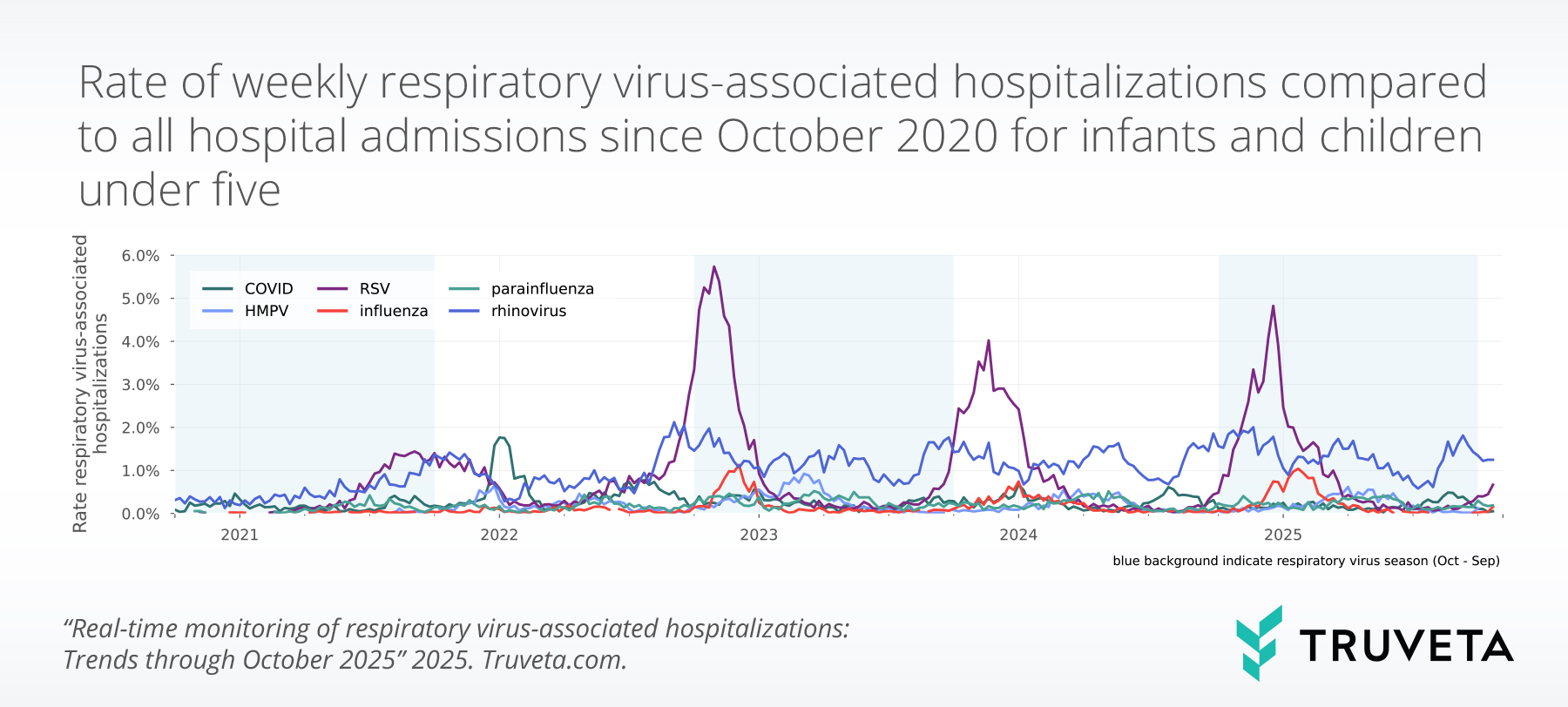

Rhinovirus accounted for the most virus-associated hospitalizations at 1.4% in this age group. RSV-associated hospitalizations among the pediatric population more than doubled for the second month in a row, now accounting for 0.7% of all hospitalizations in this age group. Test positivity for RSV also rose by 134.6%, indicating early seasonal activity.

Respiratory virus-related hospitalizations continue to decline in adults over the age of 65
Among adults aged 65 and older, hospitalizations related to respiratory viruses declined to 1.2% of all hospitalizations (-41.5%) through October.
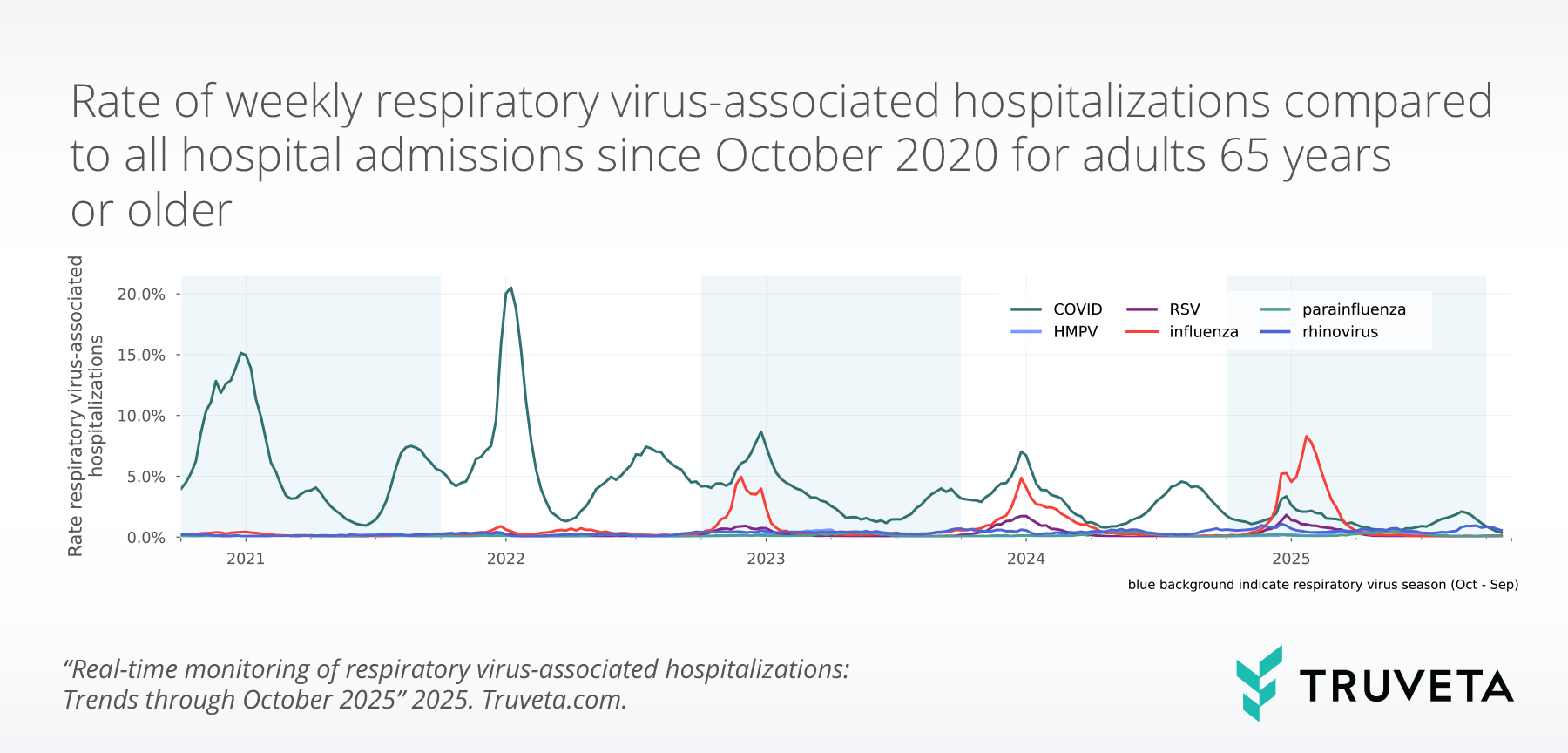
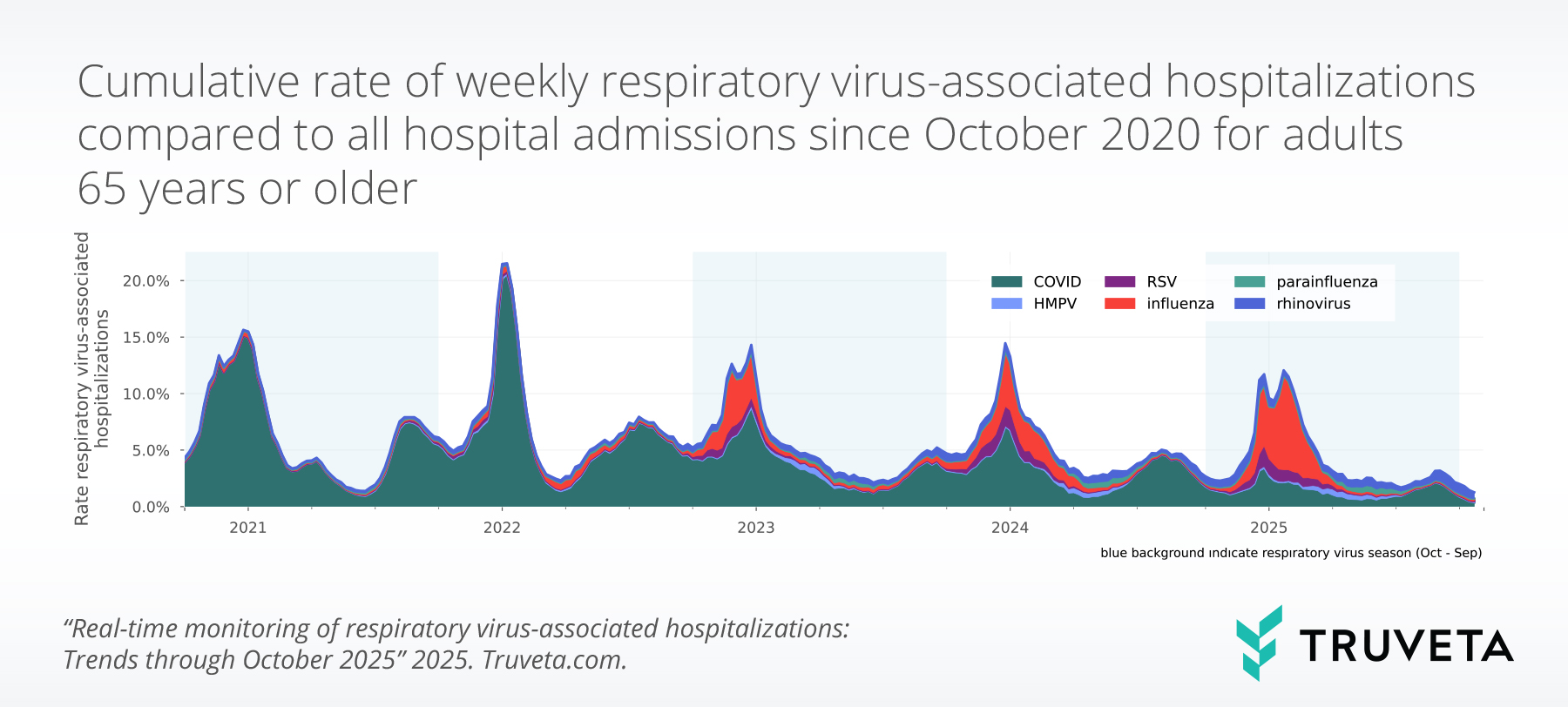
COVID-associated hospitalizations decreased to 0.4% of all hospitalizations among this age group. Rhinovirus now accounts for the most respiratory virus-associated hospitalizations at 0.6%. The rate of test positivity for RSV and influenza also increased among this group (+259.0% and +53.7%, respectively), indicating a rise in virus activity.

Discussion
It is important for public health experts and clinical providers to understand the trends in these respiratory infections to inform decisions about public health, clinical care, and public policy. Connecting population-level trends with granular clinical information can be very useful to understand which populations are most impacted and may require additional support.
We will continue to monitor respiratory virus-associated hospitalization overall and for at-risk populations throughout this 2025-2026 respiratory virus season (October 2025 through September 2026).

